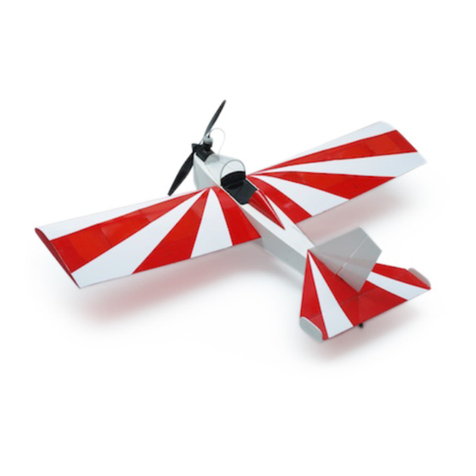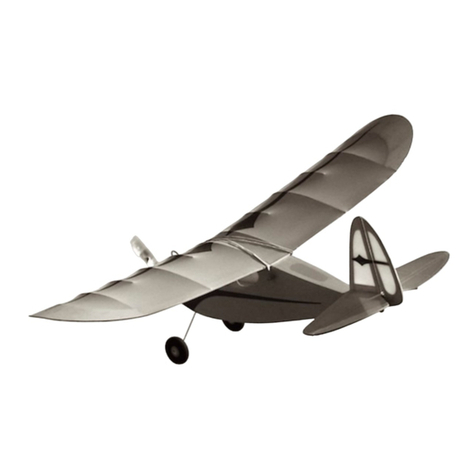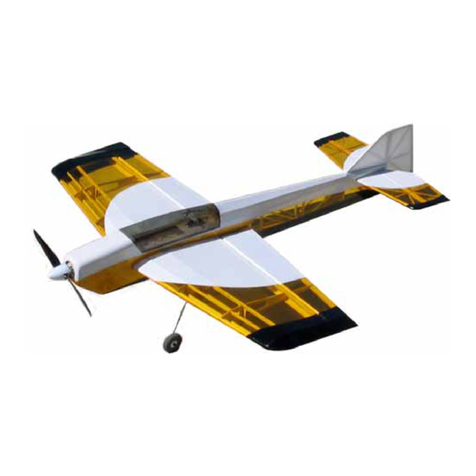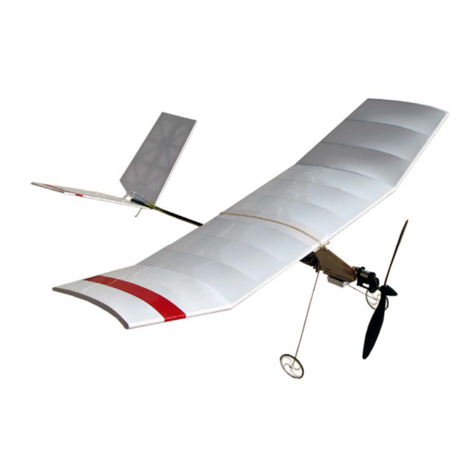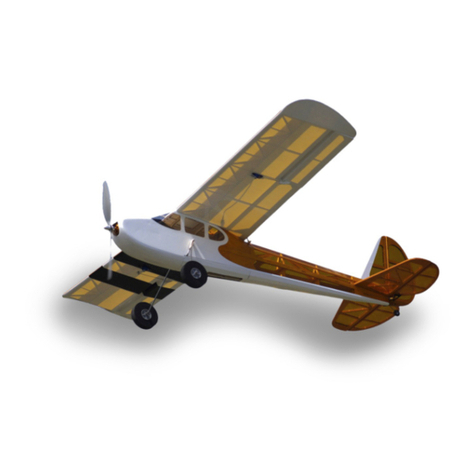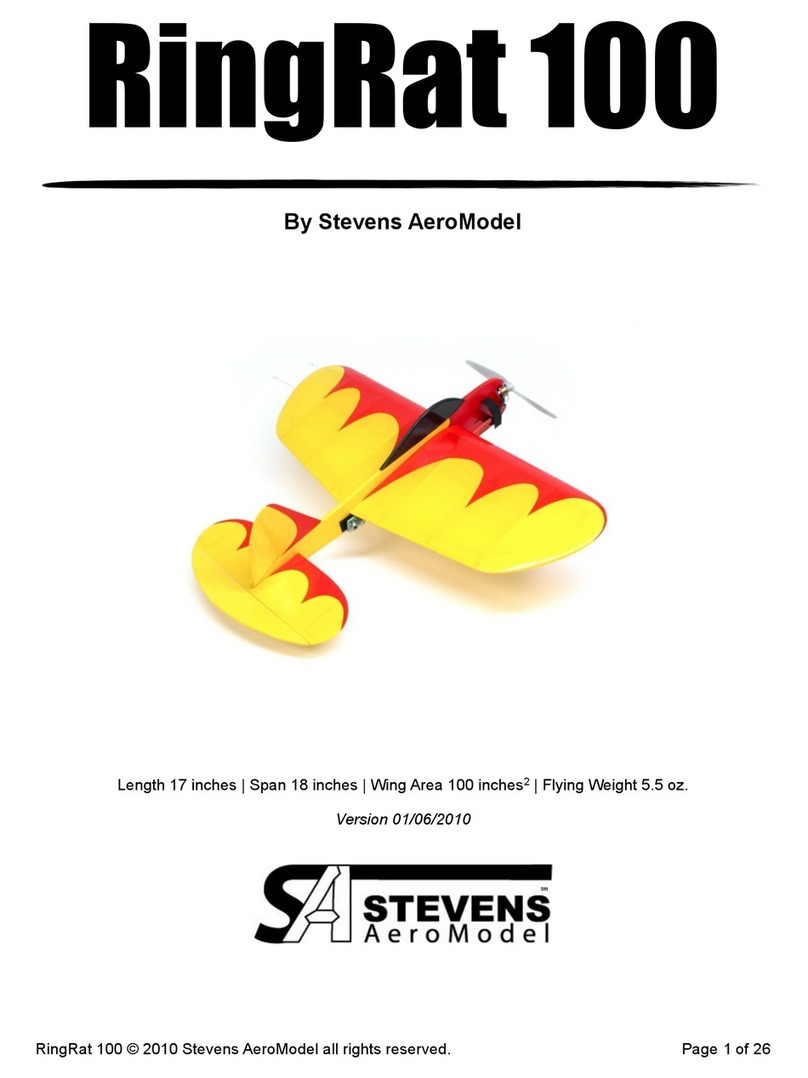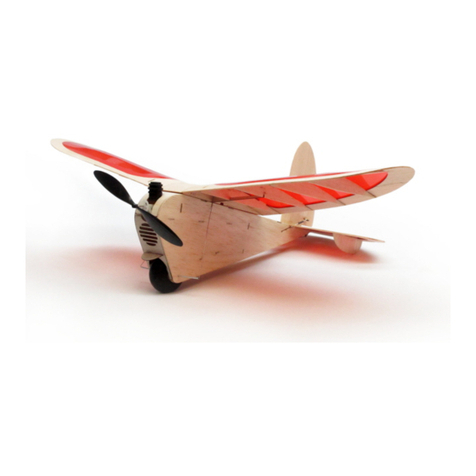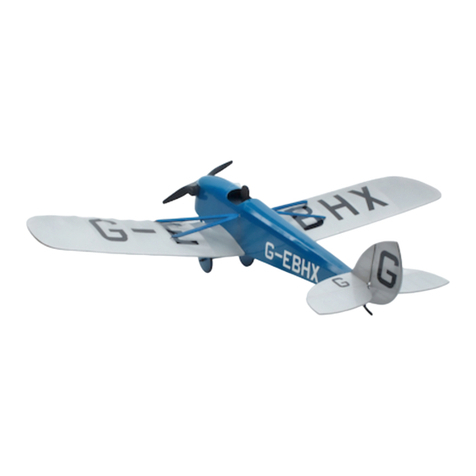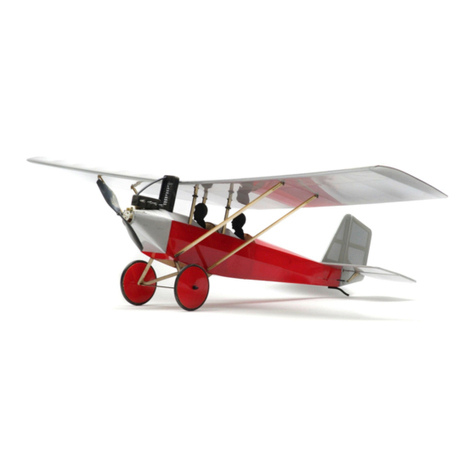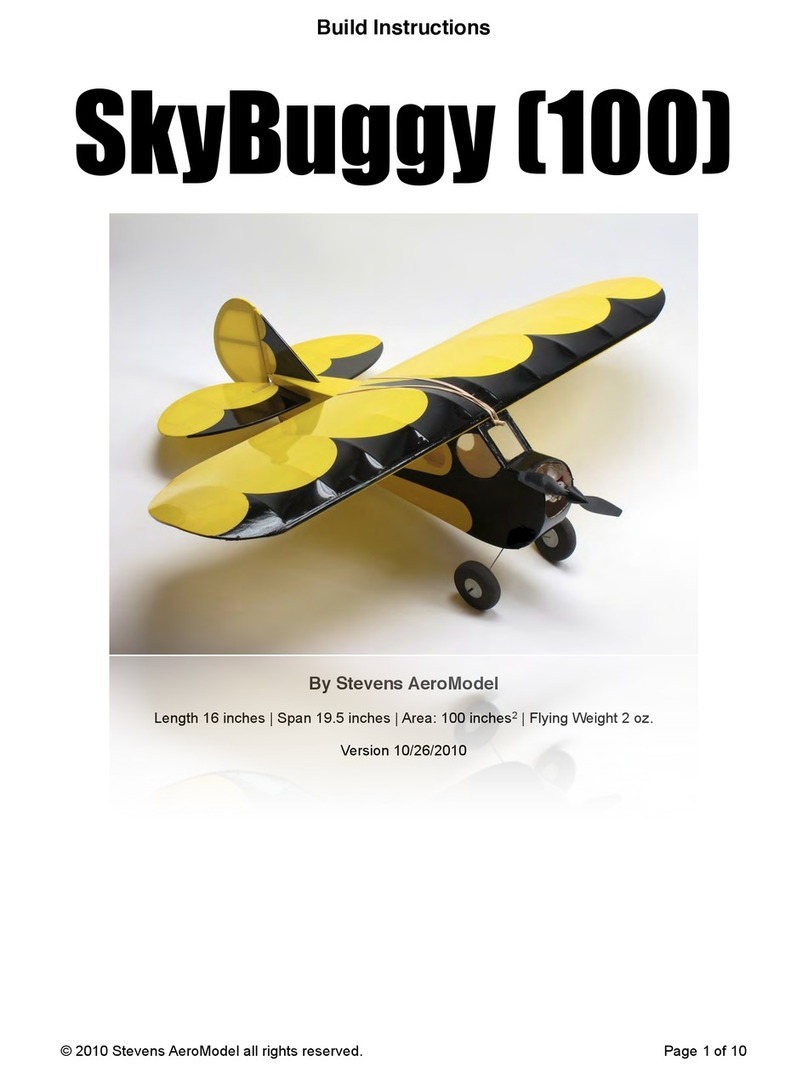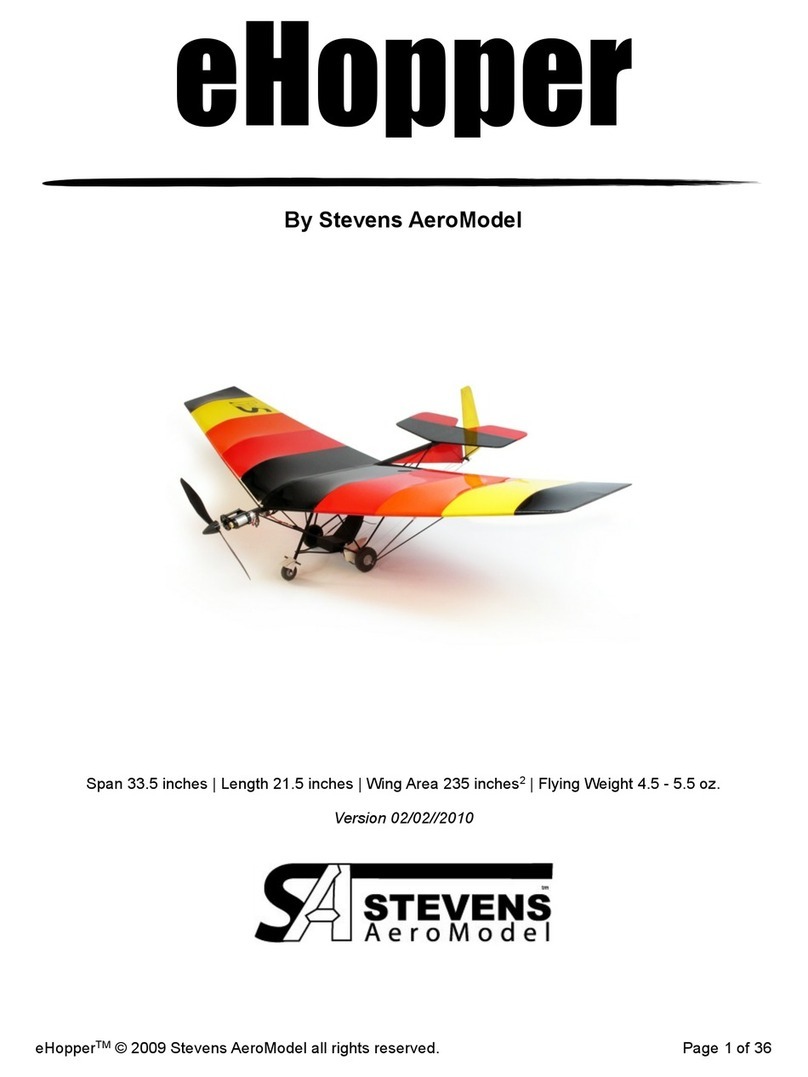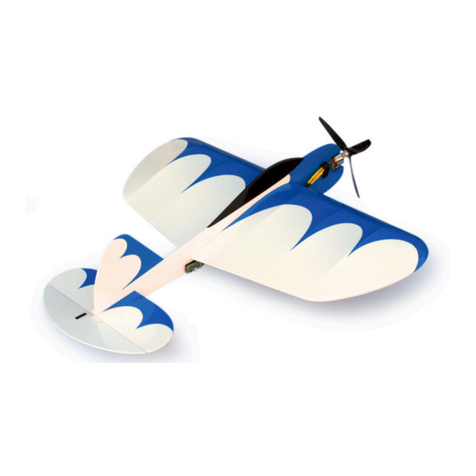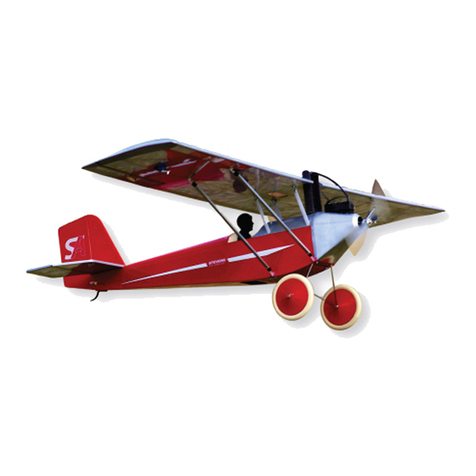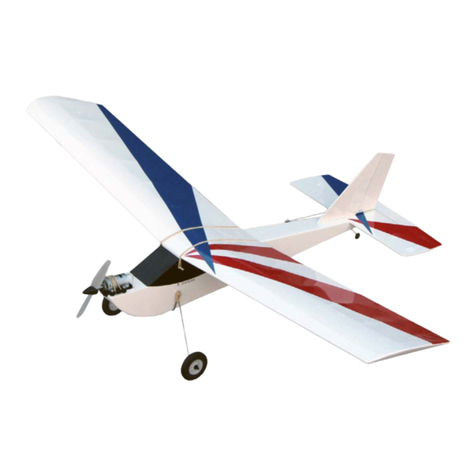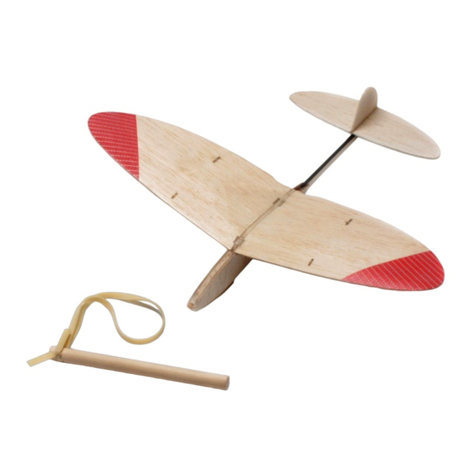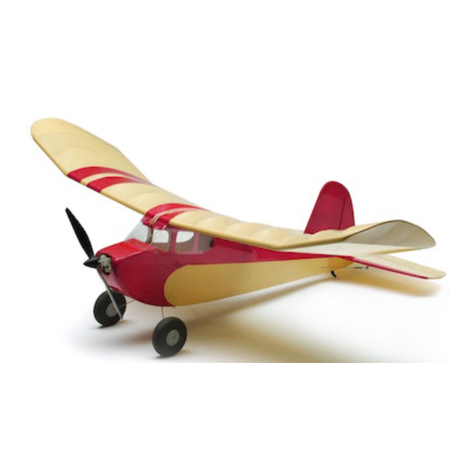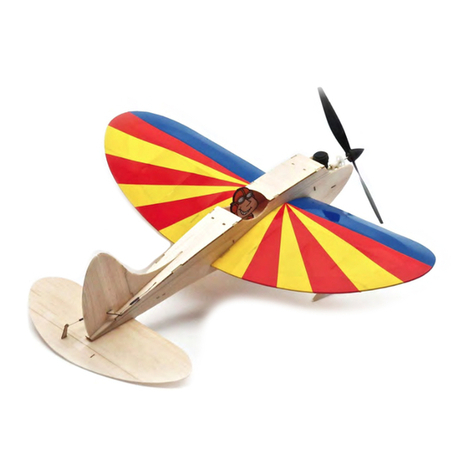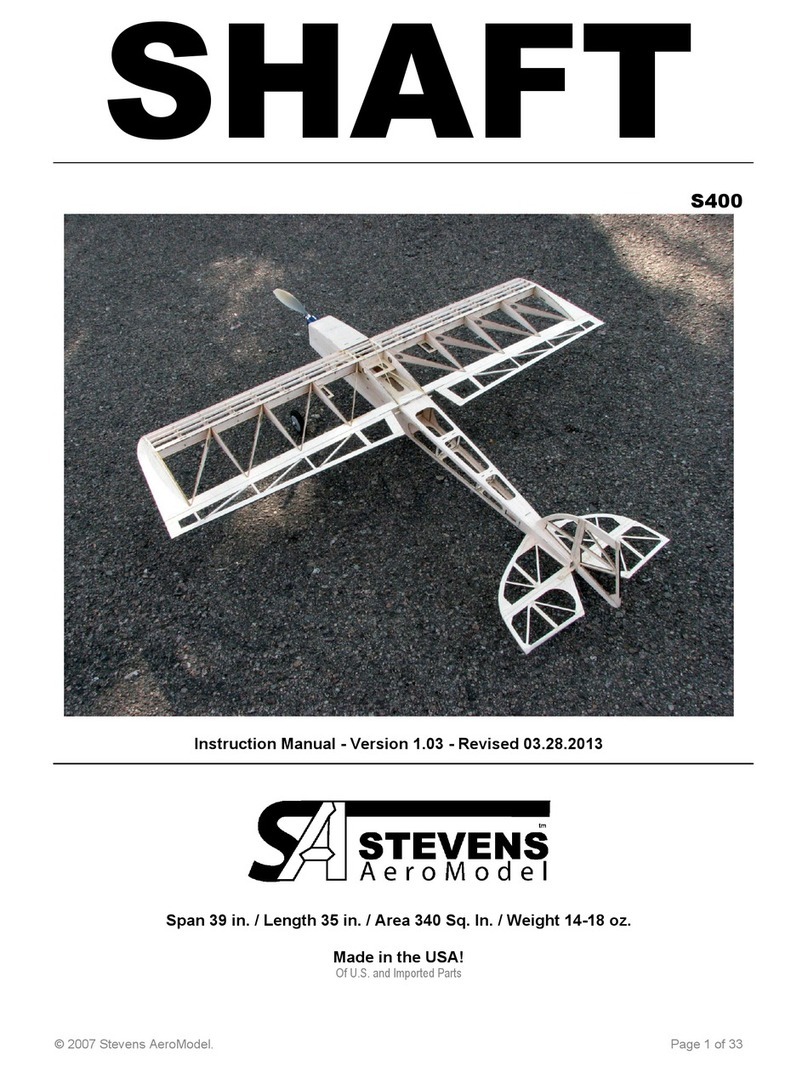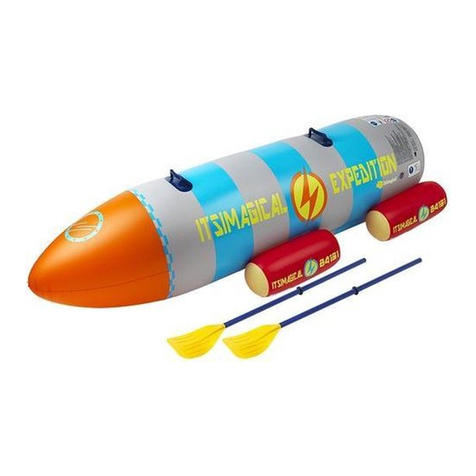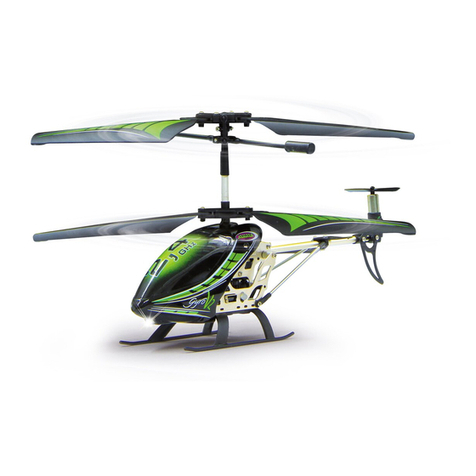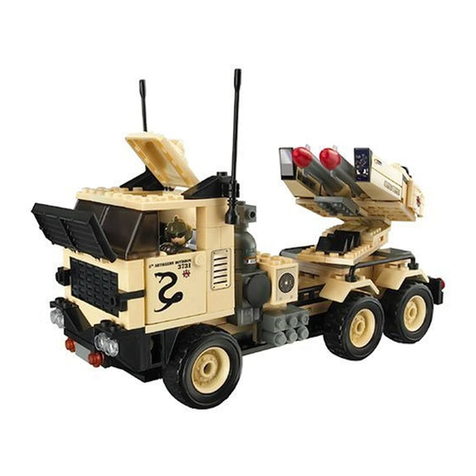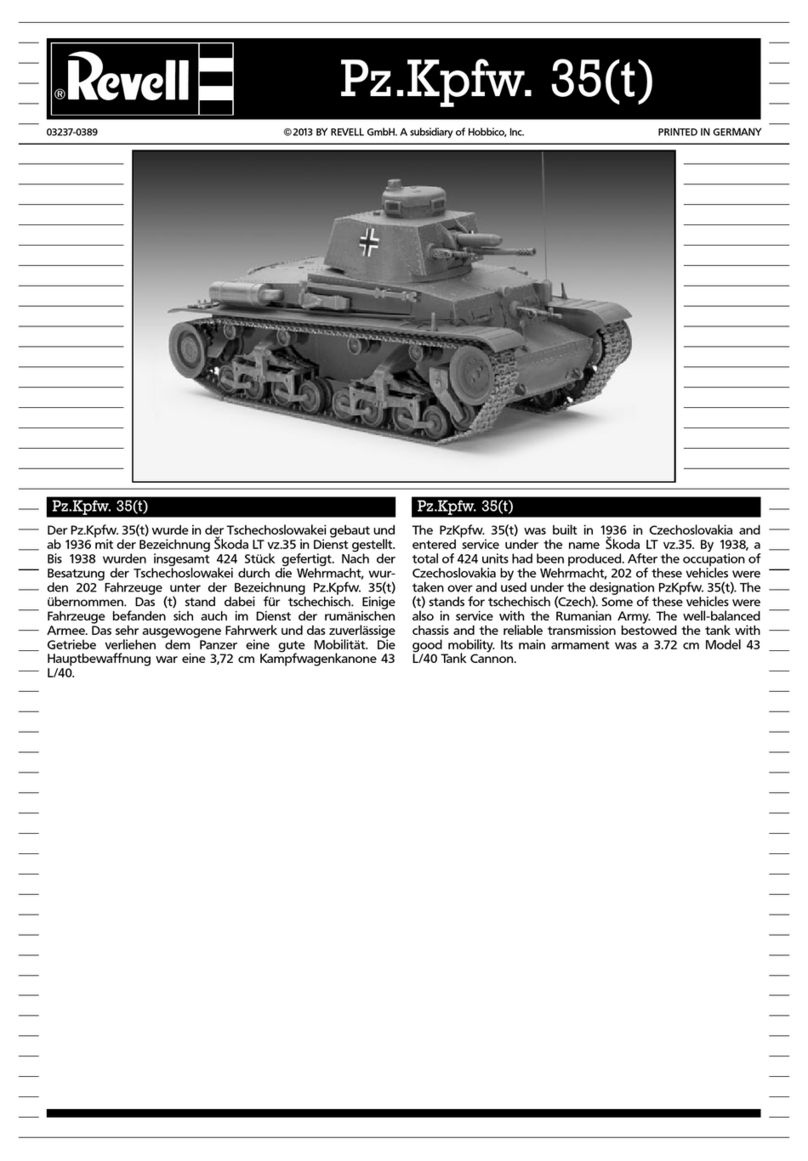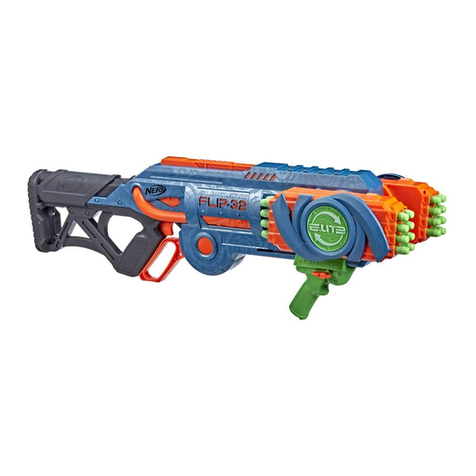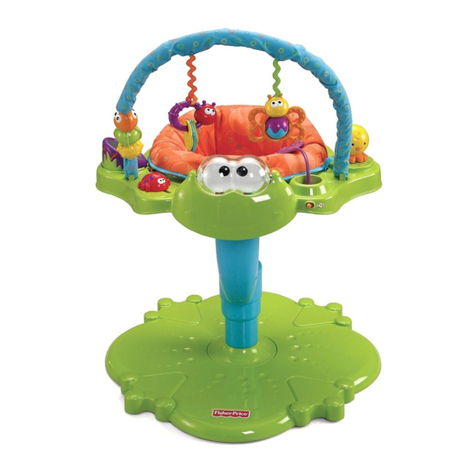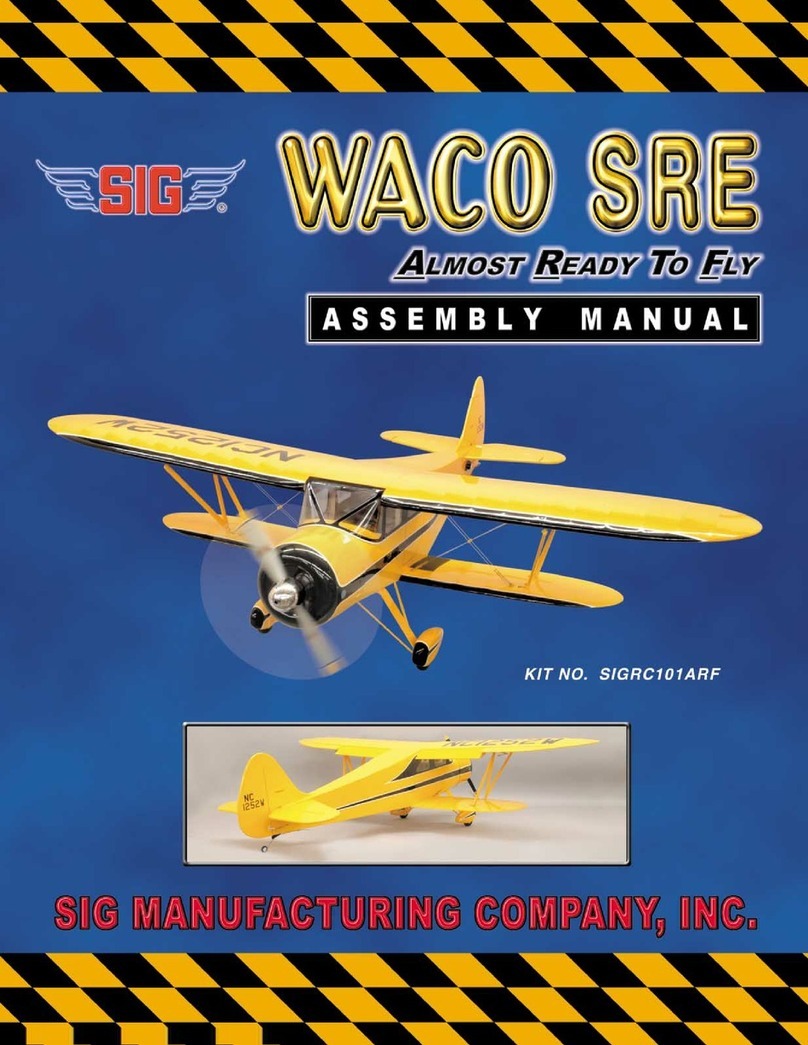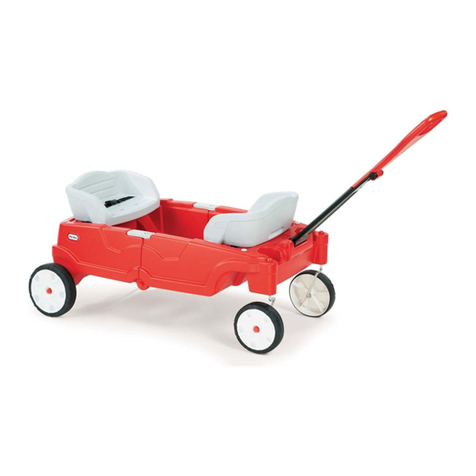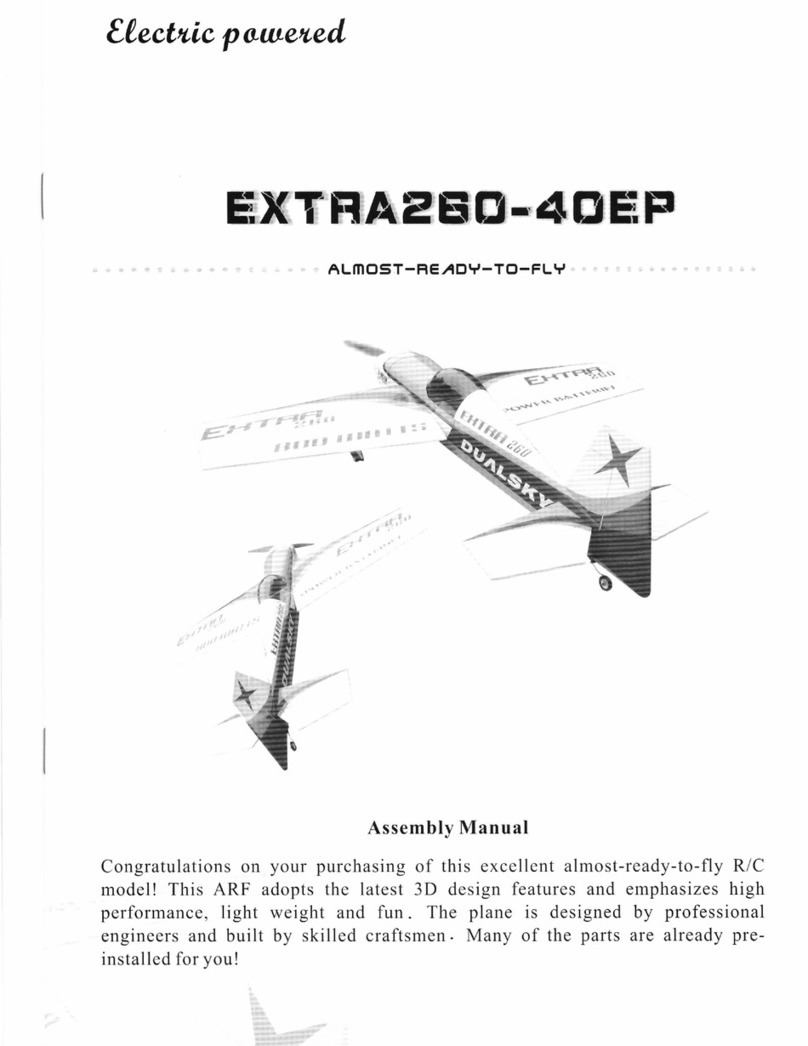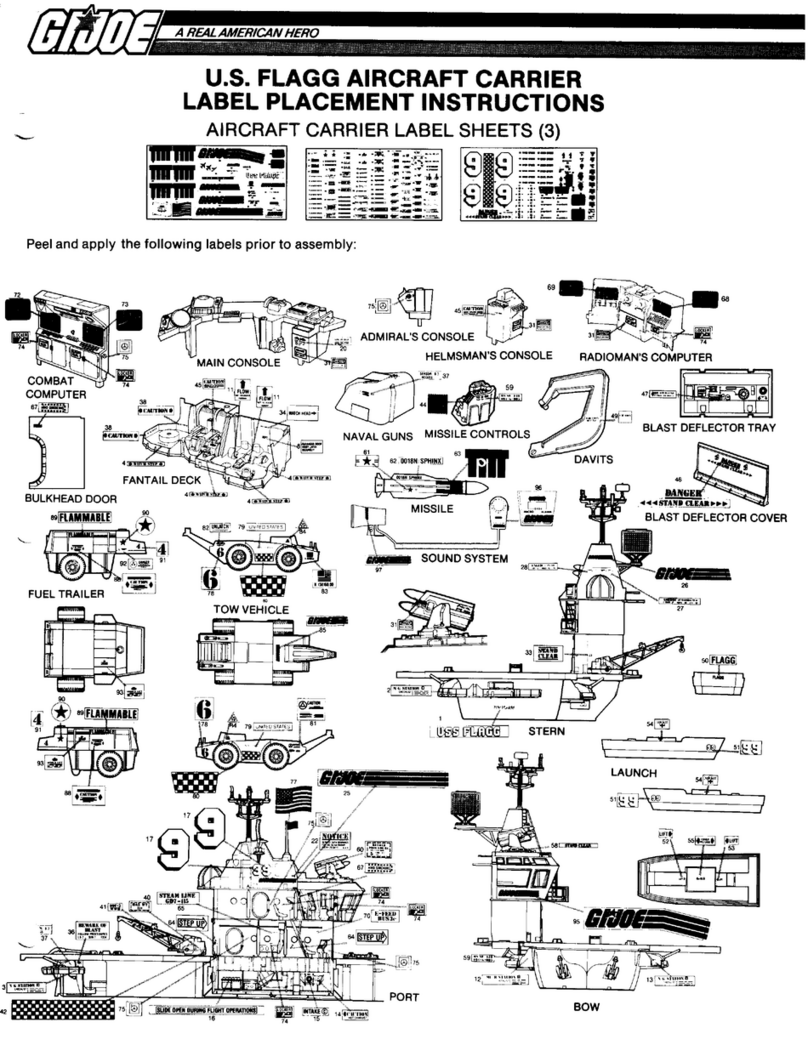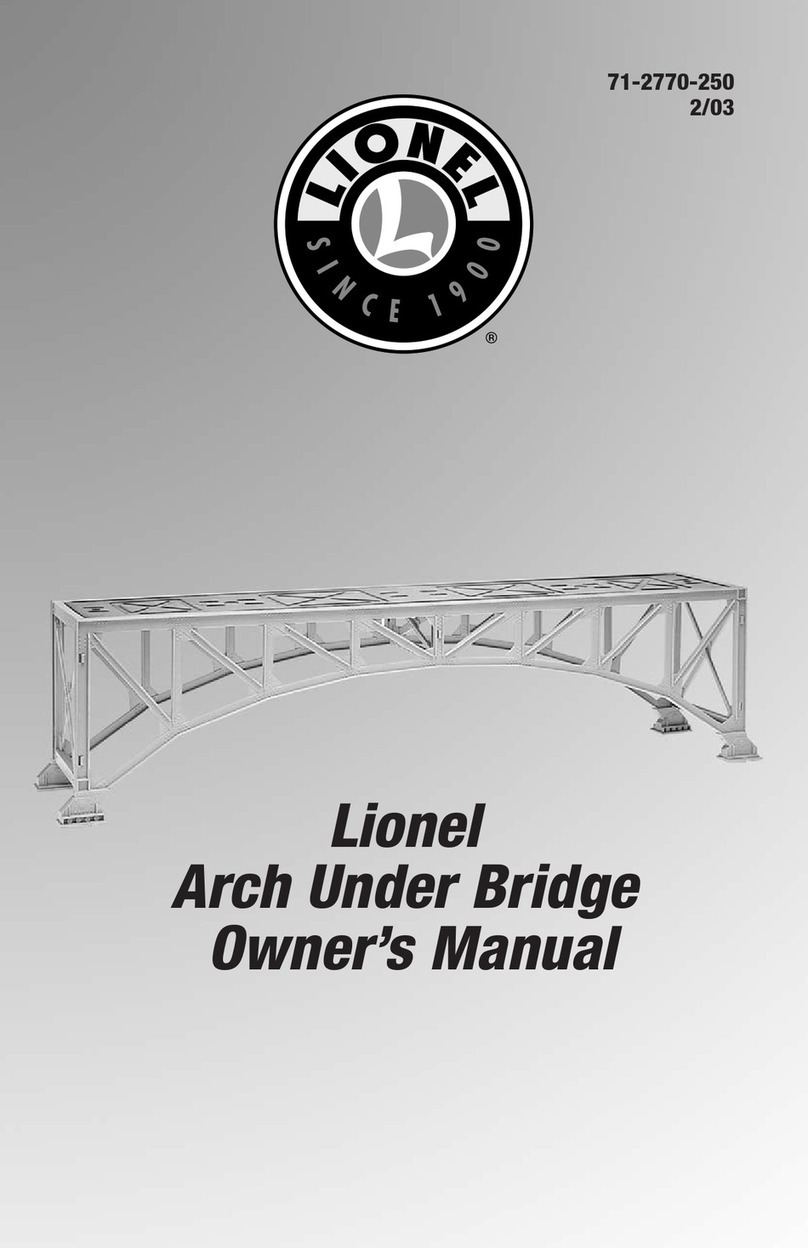
General Assembly Instructions
Thank you, for purchasing this Stevens QuickOats™(250), inspired by the venerable 1937 Quaker free
flight model line, with a touch of “toon” style. This product has been developed and manufactured using
state of the art CAD/CAM systems and features a unique interlocking construction process that, when
compared to traditional methods found in other model aircraft kits, save countless hours of measuring,
cutting, sanding, and fitting. We are certain that you’ll find our kit to offer a truly exceptional build
experience. As this kit is recommended for the novice model builder and pilot; we invite beginners who
have purchased this kit to seek the help of a seasoned builder and pilot. At any time should one run
across a term or technique that is foreign please don’t hesitate to contact our staff with your questions.
READ THIS!
Please READ and RE-READ these instructions along with any other included documentation prior to
starting your build and/or contacting our staff for builder support.
Pre-sanding
Do not skip this step. Prior to removing any parts from the laser cut sheet wood use a sanding block
loaded with 250-400 grit paper and lightly sand the back side of each sheet of wood. This step removes
any residue produced as a result of the laser cutting process and, as we have found that most stock wood
sizes run several thousandths of an inch over sized, slightly reduces the thickness of each sheet.
Leave your pre-sanded parts in the sheet until required in the assembly process.
Protecting your worktable
Use the poly tube that this kit was shipped in as a non-stick barrier between your worktable and the
product assembly. Promptly clean up any epoxy spills with rubbing alcohol and a disposable towel.
Bonding the assembly
As this product tabs, notches, and otherwise interlocks like a 3D puzzle we suggest that when fitting parts
you dry fit (use no glue) the parts together first. It’s advised to work 1-2 steps ahead in the instructions
using this dry-fit technique which allows ample opportunity to inspect the fit and location of assembled
components and realizes a benefit as each successive part contributes to pulling the entire assembly
square. Once you arrive at the end of a major assembly sequence square your work on top of a flat
building table and revisit the dry fit joints with glue. Using the dry-fit process you’ll be able to recover from
a minor build mistake and will ultimately end up with a more square and true assembly.
Unless otherwise noted in the instructions we find it easier to tack glue part (temporarily bonding parts in
assembly using a small dot of glue) using medium CA glue applied with a fine-tip CA glue applicator tip.
Tight fitting joints should be bonded using thin CA glue applied, sparingly, with a CA glue applicator tip.
Never force the fit!
Remember this is a precision cut kit our machines cut to within 5 thousandth of an inch in accuracy. Yet
the wood stock supplied by the mill may vary in thickness by up to 20 thousandths. This variance in the
wood stock can cause some tabs/notches to fit very tight. With this in mind, consider lightly sanding, or
lightly pinching, a tight fitting tab rather than crushing and forcing your parts together. You’ll break fewer
parts in assembly and will end up with a more square and true airframe.
Manual Updates
Please check our web-site for updates to these instructions prior to commencing the build.
To obtain downloads and updates relative to this model aircraft kit, please visit the corresponding product
page at StevensAero.com
Build Instructions September 13, 2011!
(c) 2011 Stevens AeroModel all rights reserved.!Page 4






















